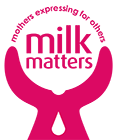The WHO/ UNICEF International Code of Marketing of Breastmilk Substitutes
Member States of the World Health Organization adopted the International Code of Marketing of Breastmilk Substitutes in 1981 with the aim of protecting, promoting and supporting appropriate infant and young child feeding practices.
The adoption of the Code was a key milestone in global efforts to improve breastfeeding, and thereby increase infant and child survival rates.
The Baby Friendly Hospital Initiative, now adapted to be The Mother and Baby Friendly Hospital Initiative, was launched by UNICEF and WHO in 1991.
During this time, evidence for the health advantages of breastfeeding and recommendations for practice has continued to increase. Member States of the World Health Organization can now say with full confidence that breastfeeding reduces child mortality and has health benefits that extend into adulthood.
On a population-basis, exclusive breastfeeding for 6 months is the recommended feeding mode for the vast majority of children, followed by continued breastfeeding with appropriate complementary foods for two years and beyond.
The Code in South Africa
In December 2012 the South African Government published Regulations Relating to Foodstuffs for Infants and Young Children, based on the International Code of Marketing of Breastmilk Substitutes and World Health Assembly Resolutions. This was done with the aim of promoting and protecting breastfeeding as the best infant feeding option.
Unicef welcomed the move saying,
Breastfeeding saves lives by protecting babies from diarrhoea and pneumonia – the biggest killers of infants and children in South Africa – and is strongly associated with improved development and educational achievement.
The new regulations under the Foodstuffs, Cosmetics and Disinfectants Act, 1972 (Act No.54 of 1972) are designed to remove commercial pressures from the infant feeding arena to ensure that all parents receive independent and objective information about infant feeding and to ensure that all mothers who wish to breastfeed are supported.
The aim of the Code is:
…to contribute to the provision of safe and adequate nutrition for infants, by the protection and promotion of breastfeeding and by the proper use of breastmilk substitutes, when these are necessary, on the basis of adequate information and through appropriate marketing and distribution.
The main Provisions included in the Code of Breastmilk Marketing:
- No advertisingof breastmilk substitutes
- No free samplesof breastmilk substitutes to mothers
- No promotion of products through health care facilities
- No company representatives to advise mothers
- No gifts or personal samplesto health workers
- Nowords or pictures idealizing artificial feeding, including pictures of infants, on labels of the products
- Information to health workers should be scientific and factual
- All informationon artificial feeding, including the labels, should explain the benefits of breastfeeding and the costs and hazards associated with artificial feeding.
- Unsuitable products, such as sweetened condensed milk, should not be promotedfor babies
- All products should be of high qualityand take into account the climatic and storage conditions of the country where they are used.


